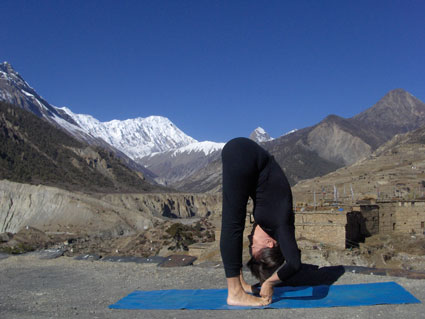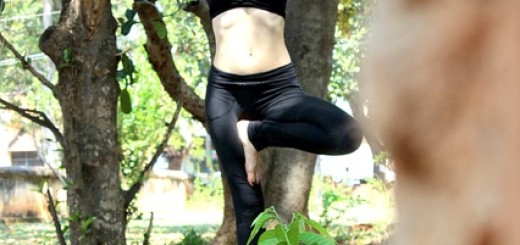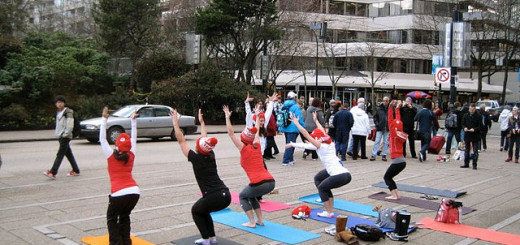How to do Padangusthasana/Big Toe Pose: Cautions & Benefits
Yoga is an ancient form of body fitness exercise that keeps your body healthy and fit as well as helps in keeping you healthy mentally and spiritually. It is now widely practiced in India as well as in many other countries in the world. Yoga consists of warm up exercises, various yoga poses, pranayama and meditation. If you practice all these daily, you will have a healthy body that is flexible and free from any diseases.
People of all age group can practice yoga for the beginners or the basic yoga. The yoga asanas here are simple to do and even those who are new to yoga can practice it easily. For beginners basic warm up yoga exercises are recommended, which help in keeping the body flexible.
Padangusthasana or big toe pose is a simple pose that is quite easy to do. It is a very effective pose and involves bending of the back. In this pose your body is stretched in the forward direction. If you are new to this asana, follow the below mentioned tips step by step and you will soon master this yoga asana.
How to do Padangusthasana or Big Toe Pose:
- Stand straight on the floor and take the Tadasana pose. Your feet should be parallel to each other and there should be at least 6 inches gap between the feet. Stretch your arms and shoulders.
- Your legs should be kept straight, without bending the knees. Next, contract the muscles of your thigh so that the knee caps will be lifted outwards.
- Now bend forward while you exhale and try to touch your toes with the fingers of your hand. Your torso and head must move together. Also try touching your knee with your forehead.
- Once you get into this position, grip your big toes with your fingers. Grip them tightly with the fingers.
- Now you have to press your toes into your hands. If you are unable to do this, put a band or a strap under your foot and hold that with your fingers.
- Now inhale and lift your torso and keep your elbows straight. Stretch as much as you can.
- Exhale and release your torso and bend towards your toes again. Repeat this procedure ten times daily. As you bend forward and touch your toes, you have to close your eyes and count your breath. Stay in this position for 30 seconds, up to 1 minute if possible.
- Stretch as if you are going back to the starting position, but you must not leave your fingers from your toes. Grip them well.
- Now you can get back to the starting position.
Cautions or Contradictions to Padangusthasana:
Being a beginner’s pose, this asana has not got many contradictions. However, it is better to practice it under the guidance of a trained yoga teacher. If you are suffering from any injuries or pain on the knee or joint pain, you cannot practice this pose. This asana is also not recommended for those who are suffering from any pain in the legs. It is not good for those who have weak ankles. While practicing this asana, if you have headache or any such issues, you must stop practicing it. If you have back pain or back injury you must not try this pose as it may harm you further. So, if you face any problems while doing this asana, you must consult a doctor or an experienced yoga teacher and act accordingly. Always remember to stretch your body within your capacity. If you over stretch it, you will harm your body rather than benefit from it.
Benefits of Padangusthasana:
Padangusthasana is a simple pose, but has lots of benefits if you practice t regularly.
- Practicing this asana is an excellent way to give good stretch to your spine as well as your back, shoulders, thighs, arms and the chest.
- By doing this asana regularly, you can increase the blood circulation in your body. The brain receives more blood and as a result your concentration power gets increased and you will be able to work better and more efficiently.
- This asana also improve the functioning of the digestive system. Doing this asana regularly helps in getting rid of any excess gas that may be trapped inside.
- If you want to prevent any pain on the knee, practice Padangusthasana regularly. It is also good for your joints.
- When you do advanced form of asanas, doing Padangusthasana helps in relaxing your body. It is also good for improving the posture of your body.
- If you have any hip related issues, practice this pose daily. This helps in preventing tensions in the hip area and thus is good for getting rid of all hip problems.
- You can rejuvenate your tired muscles by practicing this pose daily.
Therapeutic applications of Padangusthasana:
- Helps in providing a good massage to your spleen and the liver.
- This pose helps in making your knees more strong.
- Helps in balancing your mind and the body.
- If you are suffering from high blood pressure or hypertension, practice this asana regularly. This helps in curing these problems. It also makes your legs and spine strong.
- This pose is very beneficial for making the bones stronger. So if you are suffering from osteoporosis, this pose can help you a lot.
- Those suffering from insomnia and headache can get relief by dong Padangusthasana.
If you are a beginner, you may benefit by using a strap. The strap or band will help you do this pose in the beginning. Later, as your body becomes more flexible, you can stop using the band as it becomes easier for you to touch your toes with your hands without any difficulty.




